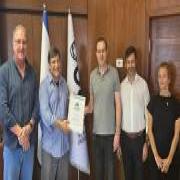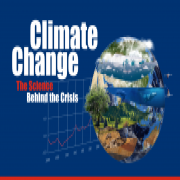Washed Away in the Rain
The relationship between the rain and the number of particles in the air that encourage droplet condensation
Rainfall and aerosols play central roles in the Earth's climate system and significantly affect our lives. Aerosols are solid particles found in the air such as dust, air pollution, plant particles, salt particles, etc., which act as condensation nuclei for water vapor and can significantly affect cloud formation and precipitation processes. One of the issues being studied today in the field of environmental quality is how aerosols affect precipitation and vice versa: how rain affects the number of aerosols in the air. A new study by Tel Aviv University identified for the first time a connection between the two: the researchers identified that from the moment it starts to rain, there is a distinct decrease in the number of aerosols in the air, which reaches minimum values two and a half hours later, and immediately after that the physical processes responsible for an increase in the concentrations of particles in the air become dominant. This data will be used by scientists as a tool for modeling climate change.
Israel as a meeting place for aerosols
The topic of aerosols is very preoccupying to scientists regarding dealing with the climate crisis. Cloud seeding (an issue that the State of Israel has been dealing with almost since its founding) is an example of the effect of aerosols on the amount of precipitation. One of the tasks of the late astronaut Ilan Ramon in space was to better understand the effect of the particles on the climate and the clouds. In addition, the important context of studies on these subjects is the effect of the increase in the number of aerosols observed in many areas of the world on global warming, solar radiation, and climate change in the world.
According to Prof. Alpert from the Porter School of Environment and Earth Sciences and the leaders of the research, "Geographically, Israel is in a special location on Earth where many particles are drained both from the Sahara desert region and from the polluting industry of Eastern Europe, which ultimately affects According to him, "even on a 'clean' day, in every cubic centimeter there is a concentration of hundreds of particles in the air, and on a polluted day the concentration can reach thousands of particles."
As part of the study, the researchers identified that from the moment it starts to rain, there is a maximum decrease of aerosols in the air that lasts up to two and a half hours (between 140-160 minutes), after which the number of particles starts to rise again and increases for various reasons. The identification is done using 10 measuring stations in Israel and California, which simultaneously measure both the amount of precipitation and the number/ of particles.
The research was conducted under the leadership of researchers Prof. Pinchas Alpert, Haim Shapir, and Emily Al-Hachem from the Porter School of Environment and Earth Sciences at Tel Aviv University and was recently published in the prestigious journal Geophysical Research Letters.
Contribution to climate models
"In the research we carried out, we see a very strong connection between rain and the concentration of aerosols, and for the first time we were able to measure it," says Prof. Alpert. These are data that were not known until now, so a comprehensive study of the physical processes that are missing in the models currently being developed in many centers around the world is urgently required, for a better understanding of the effects of global warming."
The researchers emphasize that the meaning of these data and discoveries is still not clear enough and requires testing through additional measurements worldwide. Only then will it be possible to add the information that is very necessary and even missing in the existing climate models?
"The results of the study illustrate the importance of measuring aerosols and rain simultaneously near the ground, and show the need for integrated monitoring," adds researcher Emily Elacha. "One of the major contributions of the research is to climate change models. It will be a tool for scientists, give them a new angle and promote research on the subject."





